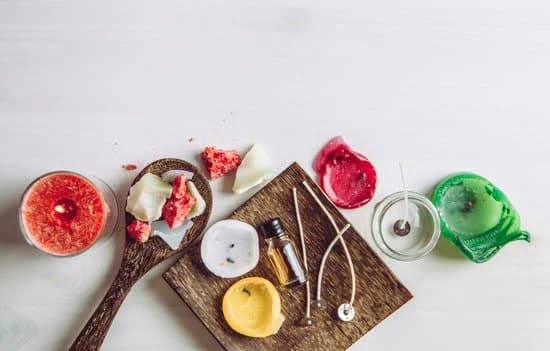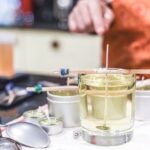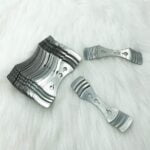Beeswax is a popular choice for candle making due to its natural and environmentally-friendly characteristics. However, before it can be used in candle making, beeswax must undergo a thorough cleaning process to remove impurities and debris.
In this article, we will explore the importance of cleaning beeswax for candle making and the benefits of using beeswax in this craft. Additionally, we will discuss different methods of cleaning beeswax, the tools and equipment needed for the process, and safe handling and storage practices for raw beeswax.
Beeswax has been used in candle making for centuries, valued for its clean-burning properties and pleasant natural aroma. The process of cleaning beeswax is crucial to ensure that these qualities are preserved in the final candles. By understanding the cleaning process and following proper techniques, crafters can achieve high-quality beeswax candles that are both beautiful and functional.
When it comes to understanding the cleaning process, it is important to recognize the different methods available for purifying raw beeswax. Additionally, having knowledge about common impurities found in raw beeswax can help crafters effectively identify and address these issues during the cleaning process. In the following sections of this article, we will delve into these topics in more detail and provide step-by-step guides for dry cleaning and wet cleaning methods.
Understanding the Cleaning Process
Beeswax is a popular choice for candle making due to its natural and non-toxic properties. However, before beeswax can be used in candle making, it needs to be cleaned to remove impurities. Understanding the cleaning process is essential for anyone interested in using beeswax for their candle making projects.
The first step in cleaning beeswax for candle making is to understand the different methods available. Two common methods are dry cleaning and wet cleaning. Dry cleaning involves melting the beeswax and allowing the impurities to settle at the bottom, while wet cleaning uses water and heat to purify the beeswax. Each method has its own set of advantages and it’s important to choose the method that best suits your preferences.
Common impurities found in raw beeswax include debris such as dirt, propolis, and bee particles. These impurities need to be removed through the cleaning process to ensure that the final product is of high quality.
The cleanliness of the beeswax will directly impact the quality of the candles produced, so taking care in this process is crucial for successful candle making. It’s recommended that individuals research how to clean beeswax for candle making thoroughly before embarking on their own cleaning process.
| Methods | Advantages |
|---|---|
| Dry Cleaning | Melts impurities away |
| Wet Cleaning | Uses water and heat purification |
Preparing the Beeswax for Cleaning
When preparing to clean beeswax for candle making, it’s important to gather the necessary tools and equipment to ensure a thorough and effective cleaning process. Some of the basic items you will need include a large pot or double boiler, cheesecloth or fine mesh strainer, heat-proof containers for melting and pouring the wax, and a thermometer. These tools will help you safely handle the beeswax and remove any impurities that may be present in its raw form.
Before beginning the cleaning process, it’s essential to handle and store raw beeswax properly. Beeswax can absorb odors and contaminants from its environment, so it’s crucial to keep it stored in a clean, dry place away from strong-smelling substances. Additionally, be sure to handle the beeswax with clean hands or gloves to avoid transferring any dirt or oils onto the wax.
Once you have gathered your materials and ensured proper handling of the beeswax, you are ready to start the cleaning process. Whether you choose to use the dry cleaning method or wet cleaning method, having these foundational steps in place will set you up for success in obtaining high-quality beeswax for your candle making endeavors. With careful preparation and attention to detail, you can create clean and pure beeswax that is perfect for crafting beautiful candles.
Dry Cleaning Method
When it comes to preparing beeswax for candle making, using the dry cleaning method is one of the most common and effective approaches. This method involves melting the raw beeswax and allowing impurities to separate from the wax through a natural process. Here’s a step-by-step guide on how to clean beeswax for candle making using the dry cleaning method:
1. Melting the Beeswax: The first step in the dry cleaning method is to melt the raw beeswax. This can be done using a double boiler or a dedicated wax melting pot. It’s important to use low heat to avoid scorching the wax and altering its natural properties.
2. Allowing Impurities to Settle: As the beeswax melts, impurities such as dirt, debris, and bee particles will rise to the top or sink to the bottom of the melted wax. Allow the melted wax to cool slightly so that these impurities can separate from the clean wax.
3. Skimming Off Impurities: Once the melted beeswax has cooled and solidified slightly, you can gently skim off any impurities that have risen to the top or settled at the bottom of the container. Use a fine mesh strainer or cheesecloth to remove any remaining particles from the wax.
4. Tips for Effectively Removing Dirt and Debris: To ensure that your beeswax is thoroughly cleaned and free of impurities, consider repeating this process multiple times until no visible debris remains in the melted wax.
Cleaning beeswax for candle making using the dry cleaning method allows you to achieve a high-quality product that burns cleanly and evenly. By following these simple steps, you can successfully purify raw beeswax for all your candle making projects.
Wet Cleaning Method
The wet cleaning method is one of the most effective ways to clean beeswax for candle making. This process involves the use of water and heat to purify the raw beeswax, removing impurities and debris to ensure that the final product is of high quality. By using this method, you can be confident that your candles will burn cleanly and evenly, without any unwanted residue or particles.
To begin the wet cleaning process, you will need a large pot, water, and of course, your raw beeswax. First, break up the beeswax into smaller chunks or pellets to make it easier to handle during the cleaning process. Place these pieces into the pot and add enough water to cover the beeswax completely. Then, heat the pot on low to medium heat, allowing the wax to melt slowly while stirring occasionally.
As the wax melts, any impurities and debris will separate from the beeswax and float to the top of the water. Once all the wax has melted, allow the mixture to cool until a layer of solidified impurities forms on top.
Carefully remove this layer by scraping it off with a spoon or skimmer. Finally, strain the remaining liquid beeswax through cheesecloth or a fine mesh strainer to remove any remaining particles before allowing it to solidify into clean beeswax blocks.
Understanding how to clean beeswax for candle making using the wet cleaning method is essential for achieving high-quality candles. By following these steps carefully and ensuring that your raw beeswax is properly purified, you can create beautiful candles with a natural and pure fragrance for yourself or your customers.
| Advantages | Disadvantages |
|---|---|
| Better removal of impurities in raw beeswax | May require more time compared to dry cleaning method |
| Results in cleaner burning candles | Requires careful handling of hot wax and water |
Filtering and Filtering
Once the beeswax has been cleaned using either the dry or wet method, it is important to filter it to remove any remaining impurities. Here are some different filtration methods to achieve the purest beeswax for candle making:
- Cheesecloth: One of the simplest ways to filter beeswax is by using cheesecloth. Simply place a piece of cheesecloth over a heat-resistant container and pour the melted beeswax through it. The cheesecloth will catch any solid particles, leaving you with a cleaner wax.
- Mesh Strainer: A mesh strainer can also be used to filter beeswax. This method is especially effective for larger impurities that may have been missed during the cleaning process.
- Activated Charcoal: For an extra level of purification, some candle makers use activated charcoal to filter their beeswax. Activated charcoal is known for its ability to absorb impurities and can help create an even purer final product.
It’s important to note that regardless of which filtering method you choose, it should be done while the beeswax is still in its liquid state. Once it solidifies, any impurities will become trapped within the wax, making them much more difficult to remove.
Proper filtration plays a crucial role in ensuring that your beeswax is clean and pure for candle making. By taking the time to carefully filter your wax, you can greatly improve the quality of your homemade candles and enjoy a clean burn with minimal residue.
Now that you have successfully filtered your cleaned beeswax, it’s time to focus on its storage and preservation to maintain its purity until you’re ready to use it for candle making.
Storage and Preservation
Proper Storage Techniques for Cleaned Beeswax
Once you have successfully cleaned your beeswax, it is crucial to store it properly to maintain its quality. One of the best ways to store cleaned beeswax is in a cool, dry place away from direct sunlight and heat sources. Beeswax has a melting point of approximately 145°F (63°C), so it is important to keep it in a location where it will not be exposed to high temperatures that could cause it to melt.
Another effective method for storing cleaned beeswax is to wrap it in parchment paper or place it in an airtight container. This will help prevent dust, dirt, and other impurities from contaminating the beeswax during storage. Additionally, storing the beeswax away from strong odors or chemicals will help maintain its natural scent and purity.
How to Preserve the Purity of Beeswax for Candle Making
Preserving the purity of cleaned beeswax is essential for ensuring high-quality candles. One way to preserve the purity of beeswax is by adding a natural antioxidant, such as vitamin E oil, to the melted wax before pouring it into candle molds. This can help extend the shelf life of the beeswax and prevent oxidation.
It is also important to avoid exposing the cleaned beeswax to contaminants during the candle making process. Keep all equipment and work surfaces clean and free from any foreign substances that could compromise the purity of the wax. By taking these precautions, you can ensure that your candles are made with the highest quality, pure beeswax.
Tips and Tricks for Quality Beeswax
In addition to proper storage and preservation techniques, there are some additional tips for achieving the best quality beeswax for candle making. It’s important to source raw beeswax from reputable suppliers who prioritize quality and purity. Additionally, paying close attention to the cleaning process and using high-quality filtration methods can help ensure that your beeswax is free from impurities.
One common mistake to avoid during storage and preservation is exposing cleaned beeswax to moisture. Moisture can lead to mold growth and spoilage of the wax, so it’s important to keep it dry at all times. By following these tips and tricks, you can consistently produce high-quality candles using clean, pure beeswax.
Tips and Tricks for Quality Beeswax
When it comes to making high-quality candles, the cleanliness and purity of the beeswax used are crucial factors that can significantly impact the final product. To ensure that you’re getting the best possible beeswax for your candle making endeavors, there are several tips and tricks that you can employ during the cleaning process.
Choosing the Right Beeswax
Before even beginning the cleaning process, it’s essential to start with high-quality raw beeswax. Look for reputable suppliers or local beekeepers who can provide you with pure, natural beeswax free from additives or contaminants.
Use of Natural Cleaning Agents
When cleaning beeswax for candle making, it’s best to stick to natural cleaning agents such as white vinegar or baking soda. These gentle yet effective options can help remove dirt and impurities without compromising the integrity of the beeswax.
Avoid Overheating
One common mistake in the cleaning process is overheating the beeswax, which can lead to discoloration or a burnt smell. It’s important to heat the wax gently and gradually to avoid any damage and preserve its natural properties.
By following these tips and tricks, you can ensure that the beeswax used in your candle making is clean, pure, and of the highest quality. Taking these extra steps during the cleaning process will ultimately result in candles that burn longer, brighter, and with a delightful aroma – all thanks to the clean beeswax at their core.
Conclusion
In conclusion, the process of cleaning beeswax for candle making is an essential step in ensuring the quality and purity of the final product. By removing impurities and debris from raw beeswax, crafters can create clean-burning and long-lasting candles that are free from any unwanted substances. Whether using the dry cleaning method or the wet cleaning method, it is important to follow proper techniques and precautions to achieve the best results.
As highlighted throughout this article, understanding the cleaning process and taking necessary steps to prepare and handle raw beeswax are crucial in producing high-quality candles. Additionally, filtering beeswax after cleaning helps to remove any remaining impurities, ultimately contributing to the overall purity of the beeswax for candle making.
For those interested in delving into candle making using beeswax, learning how to clean beeswax for candle making is an empowering skill that can enhance the entire crafting experience. Not only does it allow individuals full control over the purity and quality of their candles, but it also opens up opportunities for creativity in experimenting with different types of candles.
So, take a hands-on approach by trying out the cleaning methods discussed in this article and discover the satisfaction of working with beautifully clean beeswax for your next candle-making project.
Frequently Asked Questions
How Do You Clean Raw Beeswax for Candles?
To clean raw beeswax for candles, you can start by breaking the beeswax into small pieces and placing it in a double boiler. Melt the wax over low heat and then carefully pour it through a cheesecloth-lined strainer to remove any debris. You can repeat this process as needed until the wax is clean and free of impurities.
Does Vinegar Clean Beeswax?
Yes, vinegar can be used to clean beeswax. You can create a solution of equal parts hot water and white vinegar, then immerse the beeswax in the solution.
Let it soak for a few minutes, then use a soft brush to gently scrub away any dirt or debris. Rinse the beeswax thoroughly with clean water and allow it to dry completely before using it for candle making or other projects.
How Do You Filter Dirty Beeswax?
Filtering dirty beeswax can be done using a simple method involving cheesecloth or fine mesh filters. After melting the beeswax in a double boiler, pour it through several layers of cheesecloth or a fine mesh filter to strain out any impurities such as dirt, propolis, or leftover bee parts.
This process may need to be repeated multiple times to achieve desired purity for candle making or other uses.

Welcome to my candle making blog! In this blog, I will be sharing my tips and tricks for making candles. I will also be sharing some of my favorite recipes.





